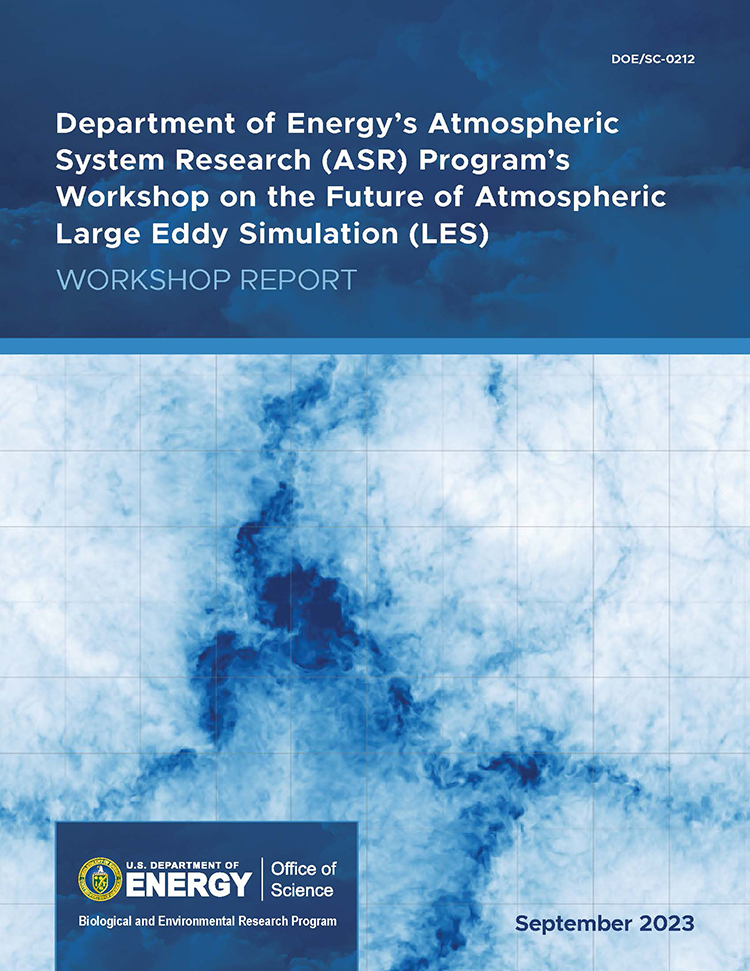
The U.S. Department of Energy’s (DOE) Atmospheric System Research (ASR) has published a new scientific report, the Department of Energy’s Atmospheric System Research (ASR) Program’s Workshop on the Future of Atmospheric Large Eddy Simulation (LES) (PDF).
In April 2022, ASR held a two-day workshop on the future of atmospheric LES—a tool used to understand physical processes such as turbulence, aerosols, clouds, precipitation, radiation, the interactions among all these, and their interactions with the underlying surface.
“The workshop offered a rare, crosscutting setting in which LES users, observationalists, and model developers met to chart pathways forward to accelerate scientific progress,” explains Kyle Pressel, a Pacific Northwest National Laboratory earth scientist and lead author for the report. “It was also timely, as advances in scientific computing and data science—if leveraged well—will yield new opportunities for transformative research.”
The workshop sought to answer five questions:
- What are the opportunities for LES-related research for atmospheric aerosol, cloud, and precipitation process studies over the next five to 10 years?
- What physical process representations in LES will limit research progress over the next 10 years?
- What aspects of current LES implementations will limit research progress over the next 10 years?
- What kind of observations would be useful in improving and further validating LES?
- What opportunities exist for improved synergy between observations and LES in studies of the atmosphere, and what are the challenges in doing so?
According to the report, LES will “drive fundamental progress in open scientific questions” over the next decade as LES is increasingly used to gain an understanding of complex interacting physical processes involving atmospheric turbulence.
This growth, the report states, will be driven both by scientific demand and the expansion of computational resources needed to conduct LES—and the form that growth takes will largely be determined by how these resources are leveraged for scientific gain.
Download and read the full workshop report (PDF).
# # #This work was supported by the U.S. Department of Energy’s Office of Science, through the Biological and Environmental Research program as part of the Atmospheric System Research program.

